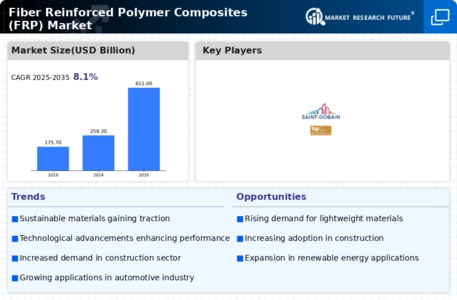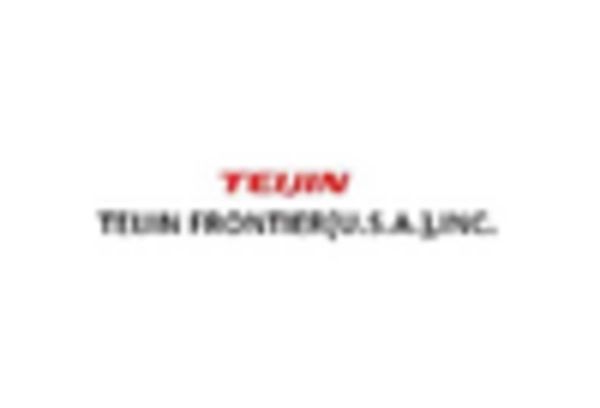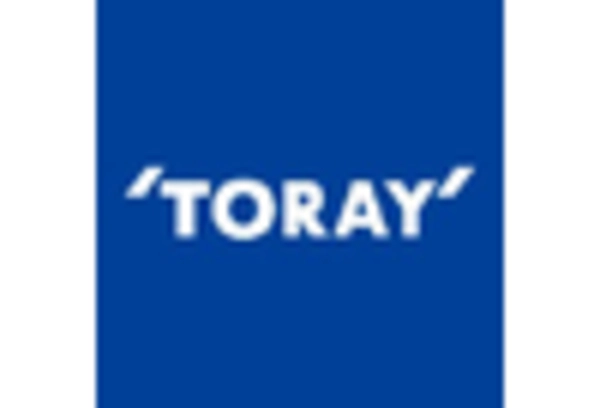-
MARKET DYNAMICS
-
\r\n4.1. Overview
-
\r\n4.2. Drivers
-
\r\n4.3. Restraints
-
\r\n4.4.
-
Opportunities
-
\r\n5. MARKET FACTOR ANALYSIS
-
\r\n5.1. Value Chain Analysis
-
\r\n5.2.
-
Porter’s Five Forces Analysis
-
\r\n5.2.1. Bargaining Power of Suppliers
-
\r\n5.2.2.
-
Bargaining Power of Buyers
-
\r\n5.2.3. Threat of New Entrants
-
\r\n5.2.4.
-
Threat of Substitutes
-
\r\n5.2.5. Intensity of Rivalry
-
\r\n5.3. COVID-19
-
Impact Analysis
-
\r\n5.3.1. Market Impact Analysis
-
\r\n5.3.2. Regional
-
Impact
-
\r\n5.3.3. Opportunity and Threat Analysis
-
\r\n6. GLOBAL FIBER
-
REINFORCED POLYMER COMPOSITES FRP MARKET, BY PRODUCT TYPE
-
\r\n6.1. Overview
-
\r\n6.2.
-
Glass Fiber Reinforced Polymer (GFRP) Composites
-
\r\n6.3. Carbon Fiber Reinforced
-
Polymer (CFRP) Composites
-
\r\n6.4. Basalt Fiber Reinforced Polymer (BFRP)
-
Composites
-
\r\n6.5. Aramid Fiber Reinforced Polymer (AFRP) Composites
-
\r\n7.
-
GLOBAL FIBER REINFORCED POLYMER COMPOSITES FRP MARKET, BY APPLICATION
-
\r\n7.1.
-
Overview
-
\r\n7.2. Automotive
-
\r\n7.3. Construction
-
\r\n7.4. Fire
-
Fighting
-
\r\n7.5. Defence
-
\r\n7.6. Others
-
\r\n8. GLOBAL FIBER
-
REINFORCED POLYMER COMPOSITES FRP MARKET, BY REGION
-
\r\n8.1. Overview
-
\r\n8.2.
-
North America
-
\r\n8.2.1. U.S.
-
\r\n8.2.2. Canada
-
\r\n8.3. Europe
-
\r\n8.3.1.
-
Germany
-
\r\n8.3.2. France
-
\r\n8.3.3. U.K
-
\r\n8.3.4. Italy
-
\r\n8.3.5.
-
Spain
-
\r\n8.3.6. Rest of Europe
-
\r\n8.4. Asia-Pacific
-
\r\n8.4.1.
-
China
-
\r\n8.4.2. India
-
\r\n8.4.3. Japan
-
\r\n8.4.4. South Korea
-
\r\n8.4.5.
-
Australia
-
\r\n8.4.6. Rest of Asia-Pacific
-
\r\n8.5. Rest of the World
-
\r\n8.5.1.
-
Middle East
-
\r\n8.5.2. Africa
-
\r\n8.5.3. Latin America
-
\r\n9.
-
COMPETITIVE LANDSCAPE
-
\r\n9.1. Overview
-
\r\n9.2. Competitive Analysis
-
\r\n9.3.
-
Market Share Analysis
-
\r\n9.4. Major Growth Strategy in the Global Fiber reinforced
-
polymer composites frp Market,
-
\r\n9.5. Competitive Benchmarking
-
\r\n9.6.
-
Leading Players in Terms of Number of Developments in the Global Fiber reinforced
-
polymer composites frp Market,
-
\r\n9.7. Key developments and Growth Strategies
-
\r\n9.7.1.
-
New PRODUCT TYPE Launch/Application Deployment
-
\r\n9.7.2. Merger & Acquisitions
-
\r\n9.7.3.
-
Joint Ventures
-
\r\n9.8. Major Players Financial Matrix
-
\r\n9.8.1. Sales
-
& Operating Income, 2022
-
\r\n9.8.2. Major Players R&D Expenditure.
-
\r\n10. COMPANY PROFILES
-
\r\n10.1. Saint Gobain
-
\r\n10.1.1.
-
Company Overview
-
\r\n10.1.2. Financial Overview
-
\r\n10.1.3. PRODUCT
-
TYPE Offered
-
\r\n10.1.4. Key Developments
-
\r\n10.1.5. SWOT Analysis
-
\r\n10.1.6.
-
Key Strategies
-
\r\n10.2. Asahi Fiberglass
-
\r\n10.2.1. Company Overview
-
\r\n10.2.2.
-
Financial Overview
-
\r\n10.2.3. PRODUCT TYPE Offered
-
\r\n10.2.4. Key
-
Developments
-
\r\n10.2.5. SWOT Analysis
-
\r\n10.2.6. Key Strategies
-
\r\n10.3.
-
Owen Corning
-
\r\n10.3.1. Company Overview
-
\r\n10.3.2. Financial Overview
-
\r\n10.3.3.
-
PRODUCT TYPE Offered
-
\r\n10.3.4. Key Developments
-
\r\n10.3.5. SWOT Analysis
-
\r\n10.3.6.
-
Key Strategies
-
\r\n10.4. Mitsubishi Rayon Co., Ltd
-
\r\n10.4.1. Company
-
Overview
-
\r\n10.4.2. Financial Overview
-
\r\n10.4.3. PRODUCT TYPE Offered
-
\r\n10.4.4.
-
Key Developments
-
\r\n10.4.5. SWOT Analysis
-
\r\n10.4.6. Key Strategies
-
\r\n10.5.
-
B&B FRP Manufacturing Inc
-
\r\n10.5.1. Company Overview
-
\r\n10.5.2.
-
Financial Overview
-
\r\n10.5.3. PRODUCT TYPE Offered
-
\r\n10.5.4. Key
-
Developments
-
\r\n10.5.5. SWOT Analysis
-
\r\n10.5.6. Key Strategies
-
\r\n10.6.
-
American Fiberglass Rebar
-
\r\n10.6.1. Company Overview
-
\r\n10.6.2. Financial
-
Overview
-
\r\n10.6.3. PRODUCT TYPE Offered
-
\r\n10.6.4. Key Developments
-
\r\n10.6.5.
-
SWOT Analysis
-
\r\n10.6.6. Key Strategies
-
\r\n10.7. American Grating
-
\r\n10.7.1.
-
Company Overview
-
\r\n10.7.2. Financial Overview
-
\r\n10.7.3. PRODUCT
-
TYPE Offered
-
\r\n10.7.4. Key Developments
-
\r\n10.7.5. SWOT Analysis
-
\r\n10.7.6.
-
Key Strategies
-
\r\n10.8. LLC
-
\r\n10.8.1. Company Overview
-
\r\n10.8.2.
-
Financial Overview
-
\r\n10.8.3. PRODUCT TYPE Offered
-
\r\n10.8.4. Key
-
Developments
-
\r\n10.8.5. SWOT Analysis
-
\r\n10.8.6. Key Strategies
-
\r\n11.
-
APPENDIX
-
\r\n11.1. References
-
\r\n11.2. Related Reports
-
\r\n
-
\r\nLIST
-
OF TABLES
-
\r\nTABLE 1 GLOBAL FIBER REINFORCED POLYMER COMPOSITES FRP MARKET,
-
SYNOPSIS, 2025 - 2034
-
\r\nTABLE 2 GLOBAL FIBER REINFORCED POLYMER COMPOSITES
-
FRP MARKET, ESTIMATES & FORECAST, 2025 - 2034 (USD BILLION)
-
\r\nTABLE
-
GLOBAL FIBER REINFORCED POLYMER COMPOSITES FRP MARKET, BY PRODUCT TYPE, 2025 -
-
\r\nTABLE 4 GLOBAL FIBER REINFORCED POLYMER COMPOSITES
-
FRP MARKET, BY APPLICATION, 2025 - 2034 (USD BILLION)
-
\r\nTABLE 5 NORTH AMERICA
-
FIBER REINFORCED POLYMER COMPOSITES FRP MARKET, BY PRODUCT TYPE, 2025 - 2034 (USD
-
BILLION)
-
\r\nTABLE 6 NORTH AMERICA FIBER REINFORCED POLYMER COMPOSITES FRP
-
MARKET, BY APPLICATION, 2025 - 2034 (USD BILLION)
-
\r\nTABLE 7 NORTH AMERICA
-
FIBER REINFORCED POLYMER COMPOSITES FRP MARKET, BY COUNTRY, 2025 - 2034 (USD BILLION)
-
\r\nTABLE
-
U.S. FIBER REINFORCED POLYMER COMPOSITES FRP MARKET, BY PRODUCT TYPE, 2025 - 2034
-
(USD BILLION)
-
\r\nTABLE 9 U.S. FIBER REINFORCED POLYMER COMPOSITES FRP MARKET,
-
BY APPLICATION, 2025 - 2034 (USD BILLION)
-
\r\nTABLE 10 CANADA FIBER REINFORCED
-
POLYMER COMPOSITES FRP MARKET, BY PRODUCT TYPE, 2025 - 2034 (USD BILLION)
-
\r\nTABLE
-
CANADA FIBER REINFORCED POLYMER COMPOSITES FRP MARKET, BY APPLICATION, 2025 -
-
\r\nTABLE 12 EUROPE FIBER REINFORCED POLYMER COMPOSITES
-
FRP MARKET, BY PRODUCT TYPE, 2025 - 2034 (USD BILLION)
-
\r\nTABLE 13 EUROPE
-
FIBER REINFORCED POLYMER COMPOSITES FRP MARKET, BY APPLICATION, 2025 - 2034 (USD
-
BILLION)
-
\r\nTABLE 14 EUROPE FIBER REINFORCED POLYMER COMPOSITES FRP MARKET,
-
BY COUNTRY, 2025 - 2034 (USD BILLION)
-
\r\nTABLE 15 GERMANY FIBER REINFORCED
-
POLYMER COMPOSITES FRP MARKET, BY PRODUCT TYPE, 2025 - 2034 (USD BILLION)
-
\r\nTABLE
-
GERMANY FIBER REINFORCED POLYMER COMPOSITES FRP MARKET, BY APPLICATION, 2025
-
- 2034 (USD BILLION)
-
\r\nTABLE 17 FRANCE FIBER REINFORCED POLYMER COMPOSITES
-
FRP MARKET, BY PRODUCT TYPE, 2025 - 2034 (USD BILLION)
-
\r\nTABLE 18 FRANCE
-
FIBER REINFORCED POLYMER COMPOSITES FRP MARKET, BY APPLICATION, 2025 - 2034 (USD
-
BILLION)
-
\r\nTABLE 19 ITALY FIBER REINFORCED POLYMER COMPOSITES FRP MARKET,
-
BY PRODUCT TYPE, 2025 - 2034 (USD BILLION)
-
\r\nTABLE 20 ITALY FIBER REINFORCED
-
POLYMER COMPOSITES FRP MARKET, BY APPLICATION, 2025 - 2034 (USD BILLION)
-
\r\nTABLE
-
SPAIN FIBER REINFORCED POLYMER COMPOSITES FRP MARKET, BY PRODUCT TYPE, 2025 -
-
\r\nTABLE 22 SPAIN FIBER REINFORCED POLYMER COMPOSITES
-
FRP MARKET, BY APPLICATION, 2025 - 2034 (USD BILLION)
-
\r\nTABLE 23 U.K FIBER
-
REINFORCED POLYMER COMPOSITES FRP MARKET, BY PRODUCT TYPE, 2025 - 2034 (USD BILLION)
-
\r\nTABLE
-
U.K FIBER REINFORCED POLYMER COMPOSITES FRP MARKET, BY APPLICATION, 2025 - 2034
-
(USD BILLION)
-
\r\nTABLE 25 REST OF EUROPE FIBER REINFORCED POLYMER COMPOSITES
-
FRP MARKET, BY PRODUCT TYPE, 2025 - 2034 (USD BILLION)
-
\r\nTABLE 26 REST OF
-
EUROPE FIBER REINFORCED POLYMER COMPOSITES FRP MARKET, BY APPLICATION, 2025 - 2034
-
(USD BILLION)
-
\r\nTABLE 27 ASIA PACIFIC FIBER REINFORCED POLYMER COMPOSITES
-
FRP MARKET, BY PRODUCT TYPE, 2025 - 2034 (USD BILLION)
-
\r\nTABLE 28 ASIA PACIFIC
-
FIBER REINFORCED POLYMER COMPOSITES FRP MARKET, BY APPLICATION, 2025 - 2034 (USD
-
BILLION)
-
\r\nTABLE 29 ASIA PACIFIC FIBER REINFORCED POLYMER COMPOSITES FRP
-
MARKET, BY COUNTRY, 2025 - 2034 (USD BILLION)
-
\r\nTABLE 30 JAPAN FIBER REINFORCED
-
POLYMER COMPOSITES FRP MARKET, BY PRODUCT TYPE, 2025 - 2034 (USD BILLION)
-
\r\nTABLE
-
JAPAN FIBER REINFORCED POLYMER COMPOSITES FRP MARKET, BY APPLICATION, 2025 -
-
\r\nTABLE 32 CHINA FIBER REINFORCED POLYMER COMPOSITES
-
FRP MARKET, BY PRODUCT TYPE, 2025 - 2034 (USD BILLION)
-
\r\nTABLE 33 CHINA
-
FIBER REINFORCED POLYMER COMPOSITES FRP MARKET, BY APPLICATION, 2025 - 2034 (USD
-
BILLION)
-
\r\nTABLE 34 INDIA FIBER REINFORCED POLYMER COMPOSITES FRP MARKET,
-
BY PRODUCT TYPE, 2025 - 2034 (USD BILLION)
-
\r\nTABLE 35 INDIA FIBER REINFORCED
-
POLYMER COMPOSITES FRP MARKET, BY APPLICATION, 2025 - 2034 (USD BILLION)
-
\r\nTABLE
-
AUSTRALIA FIBER REINFORCED POLYMER COMPOSITES FRP MARKET, BY PRODUCT TYPE, 2025
-
- 2034 (USD BILLION)
-
\r\nTABLE 37 AUSTRALIA FIBER REINFORCED POLYMER COMPOSITES
-
FRP MARKET, BY APPLICATION, 2025 - 2034 (USD BILLION)
-
\r\nTABLE 38 SOUTH KOREA
-
FIBER REINFORCED POLYMER COMPOSITES FRP MARKET, BY PRODUCT TYPE, 2025 - 2034 (USD
-
BILLION)
-
\r\nTABLE 39 SOUTH KOREA FIBER REINFORCED POLYMER COMPOSITES FRP
-
MARKET, BY APPLICATION, 2025 - 2034 (USD BILLION)
-
\r\nTABLE 40 REST OF ASIA-PACIFIC
-
FIBER REINFORCED POLYMER COMPOSITES FRP MARKET, BY PRODUCT TYPE, 2025 - 2034 (USD
-
BILLION)
-
\r\nTABLE 41 REST OF ASIA-PACIFIC FIBER REINFORCED POLYMER COMPOSITES
-
FRP MARKET, BY APPLICATION, 2025 - 2034 (USD BILLION)
-
\r\nTABLE 42 REST OF
-
WORLD FIBER REINFORCED POLYMER COMPOSITES FRP MARKET, BY PRODUCT TYPE, 2025 - 2034
-
(USD BILLION)
-
\r\nTABLE 43 REST OF WORLD FIBER REINFORCED POLYMER COMPOSITES
-
FRP MARKET, BY APPLICATION, 2025 - 2034 (USD BILLION)
-
\r\nTABLE 44 REST OF
-
WORLD FIBER REINFORCED POLYMER COMPOSITES FRP MARKET, BY COUNTRY, 2025 - 2034 (USD
-
BILLION)
-
\r\nTABLE 45 MIDDLE EAST FIBER REINFORCED POLYMER COMPOSITES FRP
-
MARKET, BY PRODUCT TYPE, 2025 - 2034 (USD BILLION)
-
\r\nTABLE 46 MIDDLE EAST
-
FIBER REINFORCED POLYMER COMPOSITES FRP MARKET, BY APPLICATION, 2025 - 2034 (USD
-
BILLION)
-
\r\nTABLE 47 AFRICA FIBER REINFORCED POLYMER COMPOSITES FRP MARKET,
-
BY PRODUCT TYPE, 2025 - 2034 (USD BILLION)
-
\r\nTABLE 48 AFRICA FIBER REINFORCED
-
POLYMER COMPOSITES FRP MARKET, BY APPLICATION, 2025 - 2034 (USD BILLION)
-
\r\nTABLE
-
LATIN AMERICA FIBER REINFORCED POLYMER COMPOSITES FRP MARKET, BY PRODUCT TYPE,
-
\r\nTABLE 50 LATIN AMERICA FIBER REINFORCED POLYMER
-
COMPOSITES FRP MARKET, BY APPLICATION, 2025 - 2034 (USD BILLION)
-
\r\n
-
\r\nLIST
-
OF FIGURES
-
\r\nFIGURE 1 RESEARCH PROCESS
-
\r\nFIGURE 2 MARKET STRUCTURE
-
FOR THE GLOBAL FIBER REINFORCED POLYMER COMPOSITES FRP MARKET
-
\r\nFIGURE 3
-
MARKET DYNAMICS FOR THE GLOBAL FIBER REINFORCED POLYMER COMPOSITES FRP MARKET
-
\r\nFIGURE
-
GLOBAL FIBER REINFORCED POLYMER COMPOSITES FRP MARKET, SHARE (%), BY PRODUCT TYPE,
-
\r\nFIGURE 5 GLOBAL FIBER REINFORCED POLYMER COMPOSITES FRP MARKET, SHARE
-
(%), BY APPLICATION, 2022
-
\r\nFIGURE 6 GLOBAL FIBER REINFORCED POLYMER COMPOSITES
-
FRP MARKET, SHARE (%), BY REGION, 2022
-
\r\nFIGURE 7 NORTH AMERICA: FIBER REINFORCED
-
POLYMER COMPOSITES FRP MARKET, SHARE (%), BY REGION, 2022
-
\r\nFIGURE 8 EUROPE:
-
FIBER REINFORCED POLYMER COMPOSITES FRP MARKET, SHARE (%), BY REGION, 2022
-
\r\nFIGURE
-
ASIA-PACIFIC: FIBER REINFORCED POLYMER COMPOSITES FRP MARKET, SHARE (%), BY REGION,
-
\r\nFIGURE 10 REST OF THE WORLD: FIBER REINFORCED POLYMER COMPOSITES
-
FRP MARKET, SHARE (%), BY REGION, 2022
-
\r\nFIGURE 11 GLOBAL FIBER REINFORCED
-
POLYMER COMPOSITES FRP MARKET: COMPANY SHARE ANALYSIS, 2022 (%)
-
\r\nFIGURE
-
SAINT GOBAIN: FINANCIAL OVERVIEW SNAPSHOT
-
\r\nFIGURE 13 SAINT GOBAIN: SWOT
-
ANALYSIS
-
\r\nFIGURE 14 ASAHI FIBERGLASS: FINANCIAL OVERVIEW SNAPSHOT
-
\r\nFIGURE
-
ASAHI FIBERGLASS: SWOT ANALYSIS
-
\r\nFIGURE 16 OWEN CORNING: FINANCIAL OVERVIEW
-
SNAPSHOT
-
\r\nFIGURE 17 OWEN CORNING: SWOT ANALYSIS
-
\r\nFIGURE 18 MITSUBISHI
-
RAYON CO., LTD : FINANCIAL OVERVIEW SNAPSHOT
-
\r\nFIGURE 19 MITSUBISHI RAYON
-
CO., LTD : SWOT ANALYSIS
-
\r\nFIGURE 20 B&B FRP MANUFACTURING INC.: FINANCIAL
-
OVERVIEW SNAPSHOT
-
\r\nFIGURE 21 B&B FRP MANUFACTURING INC.: SWOT ANALYSIS
-
\r\nFIGURE
-
AMERICAN FIBERGLASS REBAR : FINANCIAL OVERVIEW SNAPSHOT
-
\r\nFIGURE 23 AMERICAN
-
FIBERGLASS REBAR : SWOT ANALYSIS
-
\r\nFIGURE 24 AMERICAN GRATING: FINANCIAL
-
OVERVIEW SNAPSHOT
-
\r\nFIGURE 25 AMERICAN GRATING: SWOT ANALYSIS
-
\r\nFIGURE
-
LLC: FINANCIAL OVERVIEW SNAPSHOT
-
\r\nFIGURE 27 LLC: SWOT ANALYSIS










Leave a Comment